Online WHMIS Manual
1. WHMIS Overview.
WHMIS stands for
Workplace
Hazardous
Materials
Information
System
It is an information system for employees to be informed and trained on hazardous materials in the workplace. Formerly referencing MSDS sheets, the updated “WHMIS 2015” system refers to SDS sheets (“Safety Data Sheets”), which must be available for each material used in the workplace.
Suppliers who sell or import hazardous materials must:
- Indicate whether or not their product is hazardous
- Prepare labels and SDS documents and provide these to their clients, who intend to use their product in a workplace
Employers must:
- Educate and train workers on the potential hazards and safe use of these products in the workplace
- Ensure that these products are properly labelled
- Prepare SDS sheets
- Ensure appropriate control measures are in place to protect the health and safety of workers
- Somehow comply with the above, despite negligence on behalf of the suppliers, as mentioned above
Workers must:
- Pursue WHMIS and chemical safety training programs
- Take the required steps to protect themselves and their co-workers
- Participate in indentifying potential hazards
- Adhere to the rules set out by their employers in these regards
GHS – Globally Harmonized System
The Globally Harmonized System of classification and labelling of chemicals communicates hazardous information through labels on products and associated Safety Data Sheets.
The objectives of GHS are:
- To increase protection of workers through this globally recognized standard of identifying hazards of potentially hazardous materials in the workplace
- To facilitate trade through consistent labelling of hazardous materials
- To reduce costs for businesses and consumers through consistent labelling and classification of hazardous materials from different markets
GHS Main Elements
1. Classification of the hazards of chemicals
2. Communication of the hazards of chemicals, with associated precautionary information
GHS Key Terms
SDS Safety Data Sheet, formerly known as MSDS (Material Safety Data Sheet)
Hazard Group Three major groups: health, physical, environmental
Class Describes the different types of hazards
Category Describes subsections of Classes, using letters or numbers
Hazard Statement A standardized statement used to describe the hazard in each Category
Precautionary Statement Standardized phrases that describe recommended steps to address adverse effects of exposure to the product. This means, what to do when bad things happen
Signal Word Will be either “Danger,” “Warning,” or “N/A”
Pictogram Or “Hazard Pictogram,” illustrates the type of danger associated with the product
2. Hazard Groups and Classes
Each Hazard Group has Hazard Classes that have particular hazardous properties. There are three Hazard Groups: Physical, Health and Environmental.
Physical: Flammability, reactivity, corrosivity, etc. This describes physical or chemical properties of the product.
Health: Irritation, sensitization, carcinogenicity, etc. This describves the ability of the product to cause a health effect.
Environmental: Describes potential damage to the environment, indicating adherence to proper disposal, etc.
Physical Hazard Class
1. Flammable gases, flammable aerosols, flammable liquids, flammable solids.
2. Oxidizing gases, oxidizing liquids, oxidizing solids.
3. Gases under pressure.
4. Self-reactive substances and mixtures.
5. Pyrophoric gases, pyrophoric liquids, pyrophoric solids (when exposed to air).
6. Self-heating substances and mixtures (when exposed to air).
7. Substances and mixtures which, in contact with water, produce flammable gases.
8. Organic peroxides.
9. Corrosive to metals.
10. Combustible dust.
11. Simple asphyxiants.
12. Others not classified.
Health Hazard Class
1. Acute toxicity.
2. Skin irritation/corrosion.
3. Serious eye irritation/damage.
4. Respiratory or skin irritation
5. Germ cell mutagenicity.
6. Carcinogenicity.
7. Specific target organ toxicity.
8. Specific target organ toxicity after repeated exposure.
9. Aspiration hazard.
10. Biohazardous infectious materials.
11. Others not classified.
Pictograms
 Gases under pressure
Gases under pressure
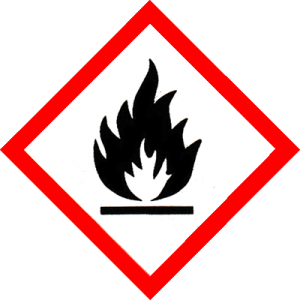 Flammables
Flammables
 Oxidizing agents
Oxidizing agents
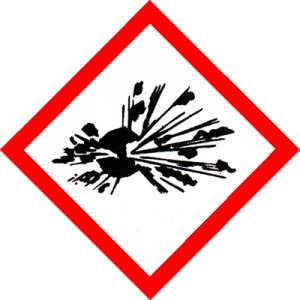 Organic peroxides, self-reactive substances and mixtures. They mean to say “explosives”
Organic peroxides, self-reactive substances and mixtures. They mean to say “explosives”
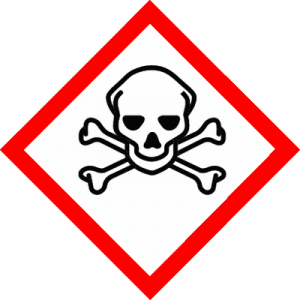 Acute toxicity: fatal and toxic via oral, skin, inhalation
Acute toxicity: fatal and toxic via oral, skin, inhalation
 Acute toxicity: skin and eye irritation, skin sensitization
Acute toxicity: skin and eye irritation, skin sensitization
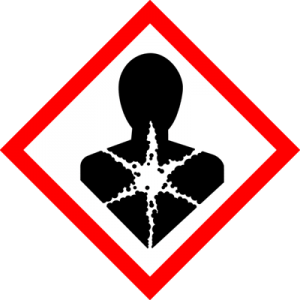 Carcinogenicity, mutagenicity, single exposure toxicity
Carcinogenicity, mutagenicity, single exposure toxicity
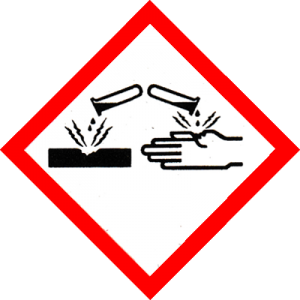 Corrosive
Corrosive
3. Labels
The two types of WHMIS GHS Labels are
1. Supplier Labels: Supposed to be added by the supplier and will appear on all of their products purchased and received at a workplace in Canada. There is no set format for supplier labels, but they must be in contrast with other information on the product or container. Suppliers are required to update their labels within 90-180 days of becoming aware of updated information regarding the product.
2. Workplace Labels: Required when a hazardous material is produced and used in that workplace, or whena hazardous material is transferred into another container, or when a supplier label becomes lost or illegible, or simply isn’t there, which is usually the case.
Situations in which a workplace label is not required:
1. A hazardous material is transferred into a container intended for immediate use
2. When the person who transferred the hazardous material is the person who will use it, during one shift. The product name is still required on the container.
The supplier label must be written in English and French; if one label, it must be bilingual; it must also include
Product Identifier The products name Initial Supplier Identifier Contact information of the manufacturer or importer
Pictograms Hazard symbols
Signal Word
Hazard Statements
Precautionary Statements
Signal Words
“Danger” or “Warning” or “N/A” to alert you to the level of hazard of the product.
Hazard Statements
Brief sentences that tell you more about the exact hazard of the product, describing the most significant hazards.
Precautionary Statements
Provide advice on how to mitigate/prevent adverse effects resulting from exposure to a hazardous product.
These statements will describe instructions about storage, handling, first aid, PPE and emergency action.
This is an example of a workplace label: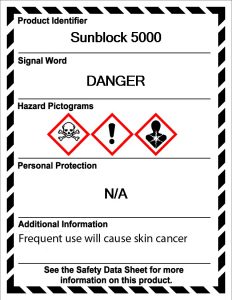
4. Safety Data Sheets
SDSs are summary documents that provide information about the hazards of a product, with advice about safety precautions and what to do if problems arise. Think of them as expanded versions of Supplier or Workplace labels.
There are four main purposes of a SDS:
1. Identification: For the product and supplier
2. Hazards: Physical, health, environmental
3. Prevention: Working safely, preventing exposure
4. Response: First aid, emergency action
These are documents are standardized, into 16 sections:
1. Identification: Product Identifier (Name), contact information of supplier/importer
2. Hazard Identification: Class/Category of hazard, appropriate label
3. Ingredient composition: Chemical and common name, Chemical Abstract Service registry number
4. First aid measures: Measures, principal symptoms and effects, action to take
5. Fire fighting measures: Suitable/unsuitable extinguishing media, precautions for fire fighters
6. Accidental releas measures: PPE, personal precautions, clean up methods
7. Handling and storage: Precautions, conditions for safe storage
8. Personal protection: Exposure control, PPE, engineering controls
9. Physical/Chemical properties:
10. Stability and toxicity: Conditions to avoid, what not to mix with, etc.
11. Toxological information: Symptoms, effects, etc.
12. Ecological information: Ecotoxicity,degradability, mobility in soil, etc.
13. Disposal considerations: Safe handling for disposal
14. Transport information: UN number and proper shipping name, special precautions, etc.
15. Regulatory information: Safety, health and environmental regulations specific to the product
16. Other information: Date of the latest revision of the SDS
Employers are required to ensure that all hazardous products have an up to date SDS when the product enters the workplace.
SDSs must be readily available for all workers.
SDSs may be stored on computer as long as all employees have access to them and are trained on how to use the computer, the computer is kept in working order and the employer makes a hard copy of the SDS upon request.
Workers must always be familiar with the potential hazards of the product before use. Workers must review the SDS, match the Product Identifiers, understand safe handling and storage instructions as well as what to do in an emergency situation regarding the product.
5. Education and Training
Education refers to general information such as how WHMIS works and the specific hazards of the product, whereas training refers to site and job specific information to employees that will address workplace procedures for storage, handling, use, disposal, spills and emergencies, etc.
A WHMIS program must be in place if a hazardous product exists in a workplace. Workers must be educated and trained as to understand how to work safely with the hazardous product.
Topics to be covered during education and training include:
- Information contained on supplier and workplace labels
- SDS information
- Safe use, handling and disposal procedures
- Emergency action involving the hazardous product
Workers must participate in the education and training sessions, as well as follow the sage work procedures specified by the employer.